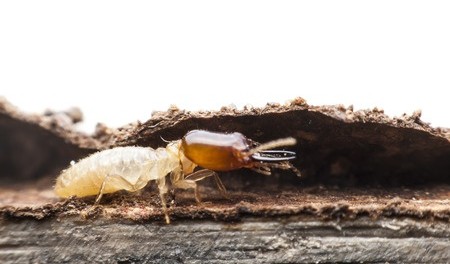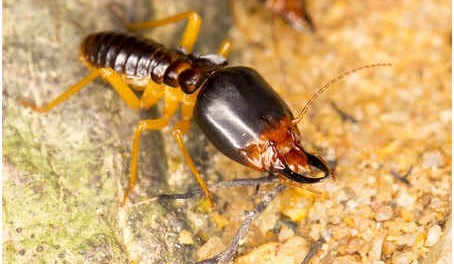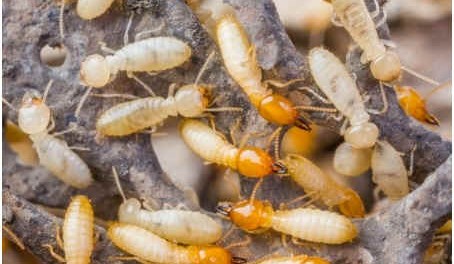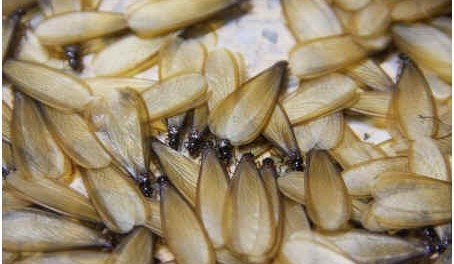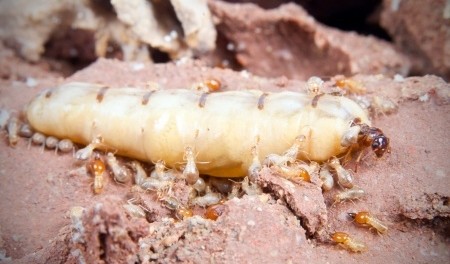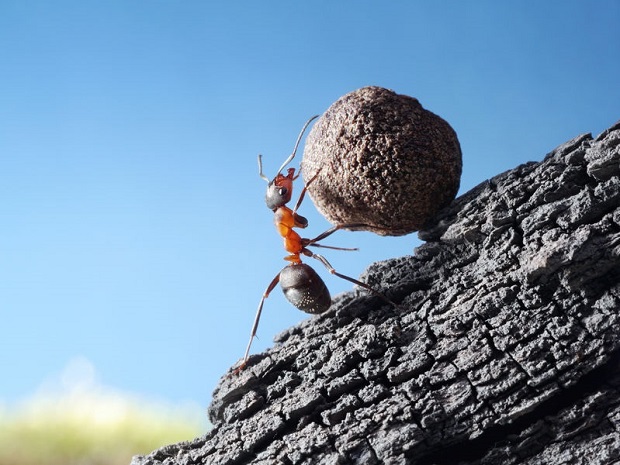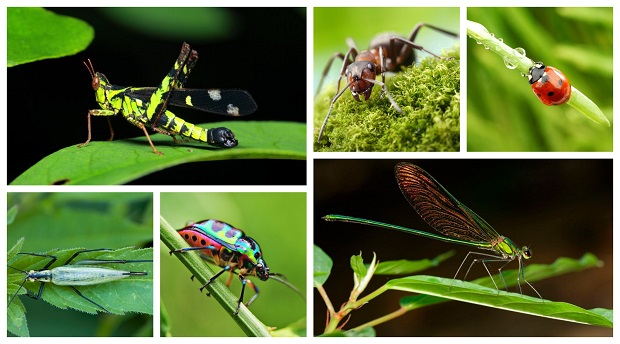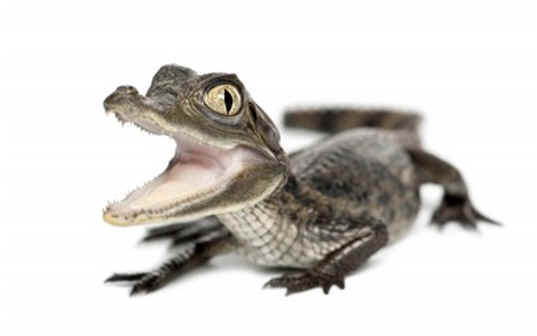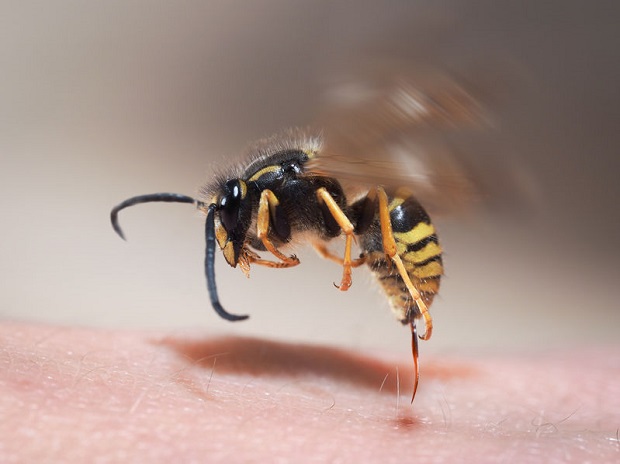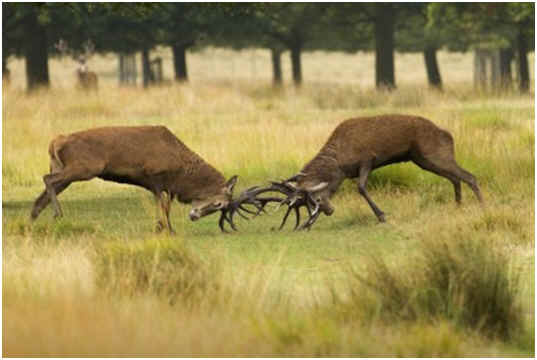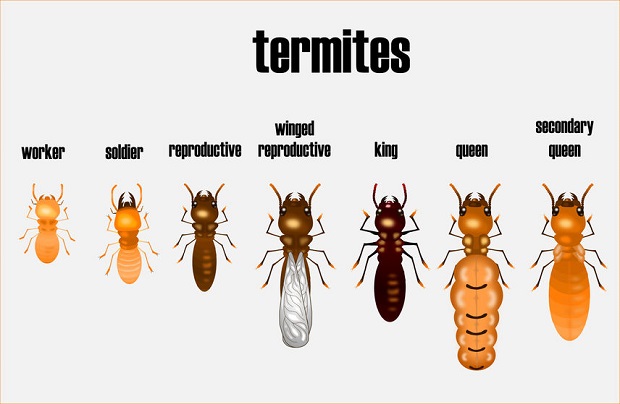
What Do Termites Look Like?
If you are wondering what termites look like, you can find photos and descriptions below.
Most individuals dealing with an infestation of drywood termites see only the excreted residue of termite droppings or perhaps a dead termite or two after the area has been treated. Once termites are burrowed deep within a piece of wood, it’s impossible to catch sight of them unless an infested piece of wood is actually cut open.
Three of the four general types of termites can be found in North America: drywood, dampwood, and subterranean.
Drywood Termites Photo
Drywood termites are most common in southern California and are either a king, queen, nymph, worker, or winged swarmer. All pale brown in color, the king and queen are slightly longer than the rest of the worker bees, to the tune of half an inch vs. three quarters.
Dampwood Termites Photo
Dampwood termites, found more typically in central and northern California, look a little bit more like bees than their skinnier drywood counterparts. Although they share the same light brown color, they can grow to a slightly longer length of five-eighths of an inch. In both cases, when kings and queens fly from a colony to an area to be infested, they sport two pairs of wings of equal shape and size.
Subterranean Termites Photo
By contrast, the Rhinotermitidae species of western subterranean termites are cream-colored and almost phosphorescent in appearance, with queens growing up to an inch in length. The other major strand of North American subterranean termite, the Coptotermes, is yellowish-brown and grows to a length of a half-inch. In both cases, these termites are subdivided into kings, queens, workers, soldiers, and swarmers.
Difference Between Ants and Termites
Once or even before drywood termites shed their wings, they are easy to confuse with flying or regular ants. There are three main ways to distinguish between these two types of insects: termites have elbowed antennae (whereas ant antennae are straight), termites have narrower waists, and termite wings contain a far greater number of veins than the wings sported by ants.
Resources
- The University of California Statewide Pest Management Program – “Termites Management Guidelines“
- Terminex – “Termites Library: Dampwood Termite, Drywood Termite, & Subterranean Termites“
- The University of Kentucky Entomology – “Protecting Your Home Against Termites“
